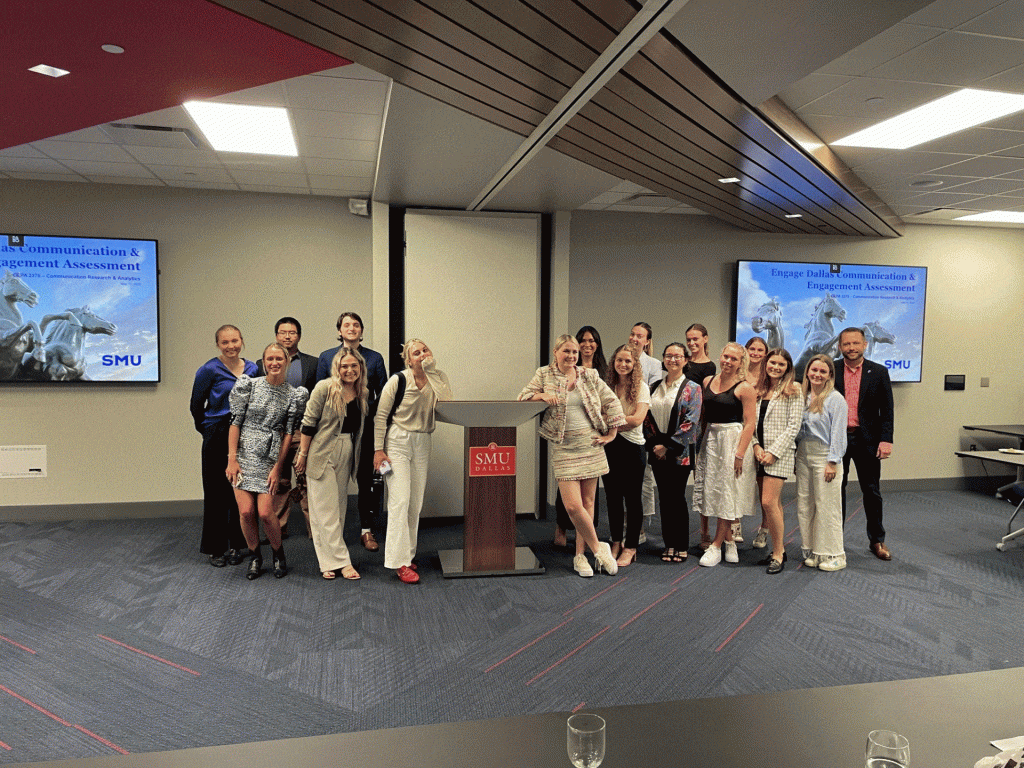During day two of the third annual Place-Based Community Engagement Symposium, the morning opened with a poster presentation session featuring faculty, staff, and community champions sharing research studies focused on various community engagement efforts.
The first research poster presented was titled During and Post-COVID-19 Community Engagement Expectations Research Poster written by Audryanna Reed & Dustin K. Grabsch, Ph.D.
Their research study discusses how they utilized a post-positivist worldview and employed a cross-sectional survey research study to explore how undergraduate students’ attitudes, behaviors, and intended skill development through community service changed during and after the COVID-19 pandemic. Their findings have implications for service-learning faculty and higher education professionals working in functional areas of community engagement.
The second research study presented explored Contextualizing Serviceships: Describing and Understanding the Influence of Financial Compensation on College Student Intern Performance written by Audryanna Reed, Dustin K. Grabsch, Ph.D, David Summers, and Kennedy Honors.
These scholars analyzed serviceships, within the non-profit organization community engagement field and the return on investment that intern supervisors receive from interns. Since non-profit organizations do not always have the budget to support an intern, they may select an intern for an unpaid position benefiting them with practical work experience or may seek an internship sponsor to financially support the intern experience. Their findings have implications for non-profit partners who host interns as well as universities looking to maximize the benefits of high-impact practices for their students. The core focus and themes found from analyzing the discussion within the focus groups were great opportunities to share with non-profit organizations that supervise interns as well as for students to understand what supervisors for service and community engagement internships desire from workers.

Thirdly, a research study was presented on Patterns in Community Partners Experiences Research Poster The Intersection of Knowledge and Engagement: Patterns in Community Partners’ Experiences with a Place-based Community Engagement Program written by Sondra N. Barringer, Ph.D., Dustin K. Grabsch Ph.D., Kalkidan W. Desta, Caitlin Anderson, Ed.D. & Sakshi Hinduja.
Their research discussed how High Education Organizations, while invested in service-learning, internships, and community-based research, poorly understand the impact of these programs on the community partners. Their focus groups revealed a two-dimensional understanding of community partners’ experiences. Their findings suggest that HEOs can leverage this two-dimensional understanding, prioritize mission alignment, and emphasize assessment and mitigation of costs to support community partner organizations better.
These three research posters emphasized scholarship produced by SMU faculty that highlighted the importance of evaluating place-based community engagement organizations and their partnership with higher education. Through Engage Dallas, increased scholarly research, and other community engagement organizations on campus, SMU has shown its commitment to creating a learning engagement that ignites faculty, staff, and students to serve others through academic and other activities. 
In addition to highlighting research, Engage Dallas gave community partners the opportunity to share creative features as well. Ms. Alendra Lyons and Filmmaker Vonnie Smith, who spoke on the Day 1 pre-symposium panel, presented a Don’t Mess With Mill City poster.
These community champions worked together to create a documentary showcasing Ms. Lyons, a proud member of Mill City, dedicating herself to investing in this marginalized community that faces struggles that often go neglected. The creation of the Mill City Community Association has helped provide stem education, sustainable agriculture, and other avenues for approving the quality of life for residents in their community. To learn more about the Mill City Community initiative, connect via Linked In or the Mill City website for more information about the finished production of their documentary or volunteer opportunities.
The poster session was an excellent opportunity to showcase the work that SMU and community partners are doing to better understand, recognize, and support the Dallas community. These posters left many faculty, staff, and community partners inspired to continue to learn about and even pursue research dedicated to place-based community engagement.
For those interested in developing a research study related to community engagement, SMU offers Research grant opportunities through Engage Dallas, the Office of Engaged Learning, the Maguire Center of Ethics, and a host of other opportunities, such as faculty and department-led research. Get connected today and stay updated on all things Engage Dallas by subscribing to our blog.



